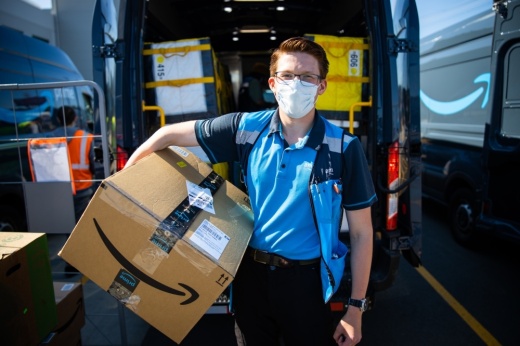This uptick in e-commerce activity has put a strain on the region’s transportation system, Bill Eisele, senior research engineer and mobility division head at the Texas A&M Transportation Institute, said at the Cy-Fair Houston Chamber of Commerce’s monthly luncheon June 15.
“[Freight transportation] really is the backbone of our economy—being able to keep these goods moving on the roadways, the supply chains and logistics,” he said. “We heard a lot more about that during the pandemic, particularly when we couldn't find toilet paper and water and disinfectant wipes, and we all started to care a little bit more about ... the supply chain.”
Because of a shortage of semiconductor chips used to make vehicles, Eisele said there are not enough trucks to keep up with demand at this time, and an ongoing shortage of drivers has been exacerbated during the pandemic.
Additionally, especially in more urbanized areas, distributors must compete for curb space with Uber drivers, parking and loading zones, waste collection and buses.
“When you make that delivery in the downtown area, that delivery driver shows up and if they’re downtown and they're looking at a skyscraper, they may not necessarily have a central location to drop packages,” he said. “There's an important aspect ... once that driver gets on the curb trying to figure out, ‘Where's my common location to put this package? How do I minimize my time on the curb to be conscientious for all those other users?’”
Amazon Hub Lockers help minimize drivers’ time on these curbs, Eisele said, and some companies are rolling out or plan to implement “space-age” delivery solutions to make deliveries more efficient.
For example, Eisele said the Nuro R2 delivery robot used by Domino’s and some grocery store chains, was the first driverless vehicle to receive regulatory approval from the U.S. Department of Transportation. He said he believes any kind of technology advancement that will help carriers reliably and safely meet their delivery windows will be viable options in the future.
In addition to autonomous vehicles, Eisele said Amazon has several patents on future distribution channels, including underground and underwater warehouses. Drone fulfillment centers could also be emerging on trains and in hovering blimps, according to these patents from Amazon, he said.
“There's a really large and global supply chain behind the person that shows up and provides you with that package, and really a lot of things have to go right for that package to get there, and most of the time it does,” he said. “There are huge implications when you're clicking on ‘next-day delivery’ or ‘same-day delivery,’ especially ... It's something that is going to catch up [to] our transportation system at some point.”





